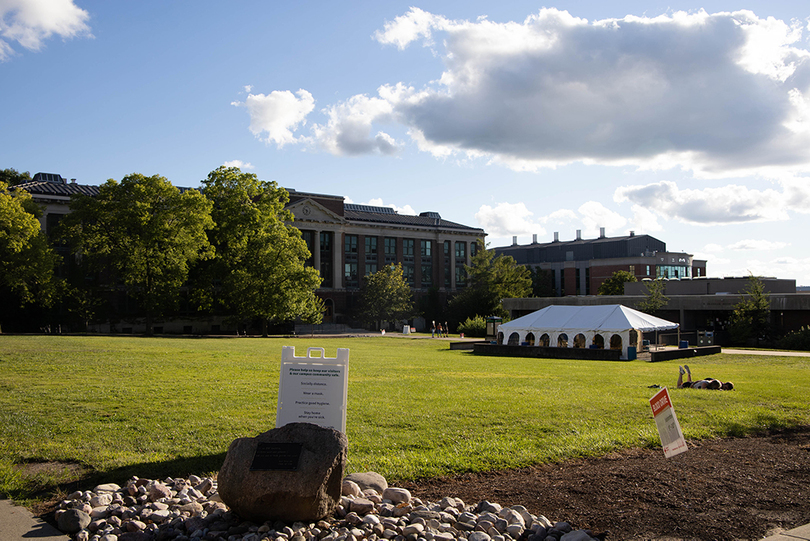Over 50,000 students enroll in SUNY-ESF solar energy course

Sarah Lee | Asst. Photo Editor
The course has been overwhelmingly popular with people aged 18 to 24 — 40% of those enrolled are in that age group.
Get the latest Syracuse news delivered right to your inbox.
Subscribe to our newsletter here.
An online SUNY-ESF class on solar energy has an enrollment about 29 times that of the school’s total student population, reaching students from around the globe.
ESF professor Neal Abrams teaches the course, Solar Energy Basics, on an online learning platform, Coursera. While the course started as an in-person, non-credit intensive workshop, growing demand led ESF to move the course online.
“As solar got bigger, we also realized there was a need for reach because of our expertise,” Abrams said.
Now, Abrams teaches the class of over 51,000 students asynchronously, with many studying from different parts of the world.
“It seems somewhat catalytic, in the sense that someone knows someone who knows someone,” Abrams said.
Abrams’ course, which is the first in a three-part series, delves into an overview of solar power. Topics in the curriculum range from voltaic cells to the current market of solar energy. Students who pass the course will receive a certificate that can be used to leverage a higher salary at their current job or even explore a new market of work entirely.

Maya Gooseman | Design Editor
The asynchronous model makes the course more accessible to students, as they aren’t barred from taking the course if it can’t work with their schedule, which was a downside to the in-person workshop, Abrams said.
The majority of those enrolled in the course also have full-time jobs, Abrams said.
“It is very hard for someone to take four days off of work, for example, to come to this workshop,” he said.
While asynchronous learning poses some challenges, a clear advantage is the ability to reach such a vast number of students, said Lisa Stephens, senior strategist of SUNY Academic Innovation in Academic Technology and Instructional Support.
“There are large forums where students all over the globe, all over different time zones, can come in and ask questions about the course and someone can hop in and provide their guidance from their perspective,” Stephens said.
Abrams’ course can not only provide more knowledge on a topic of interest, but it can also be used as a catalyst for upward mobility.
The course has been overwhelmingly popular with people aged 18 to 24 — 40% of those enrolled are in that age group, according to Abrams. It is now in the top 10 of SUNY courses on Coursera, according to a press release from ESF.
“It’s so important to give anyone access to education,” Stephens said.





